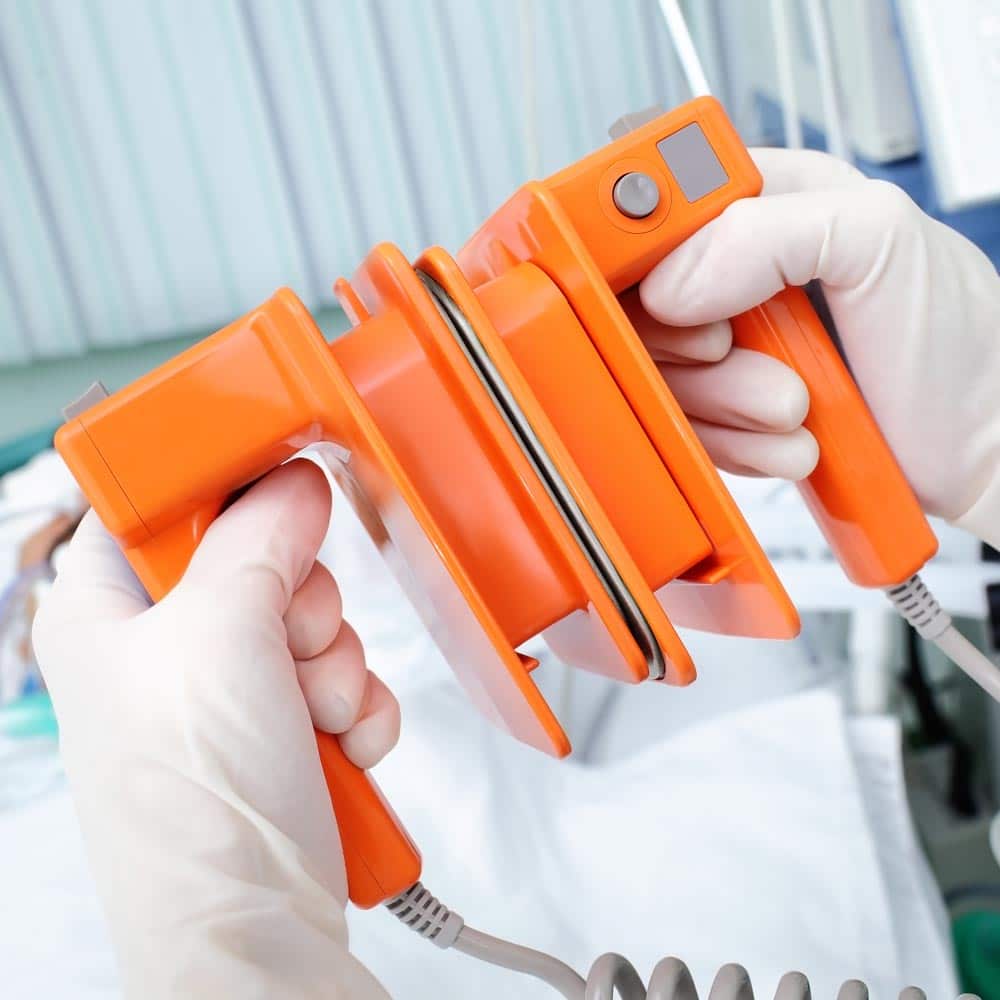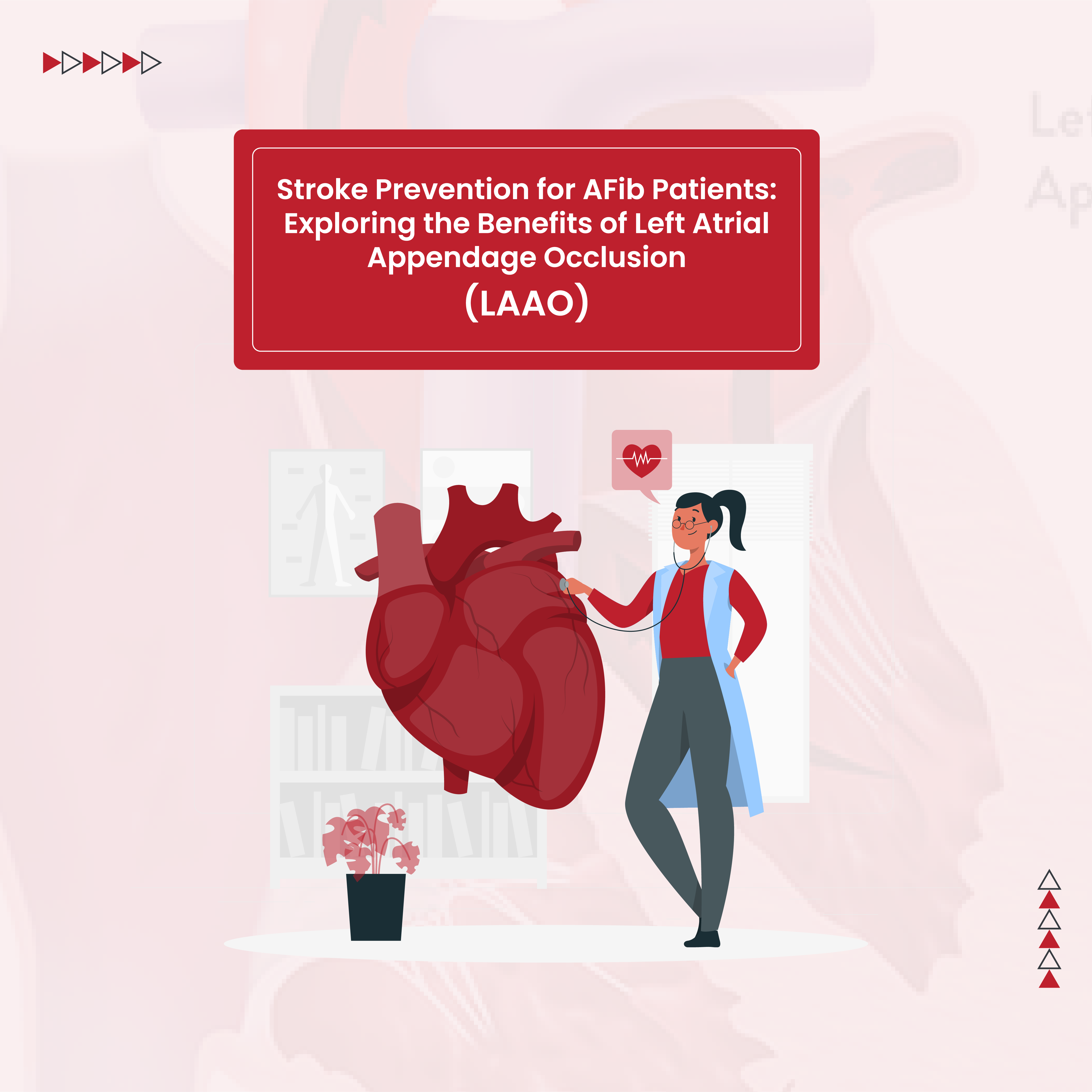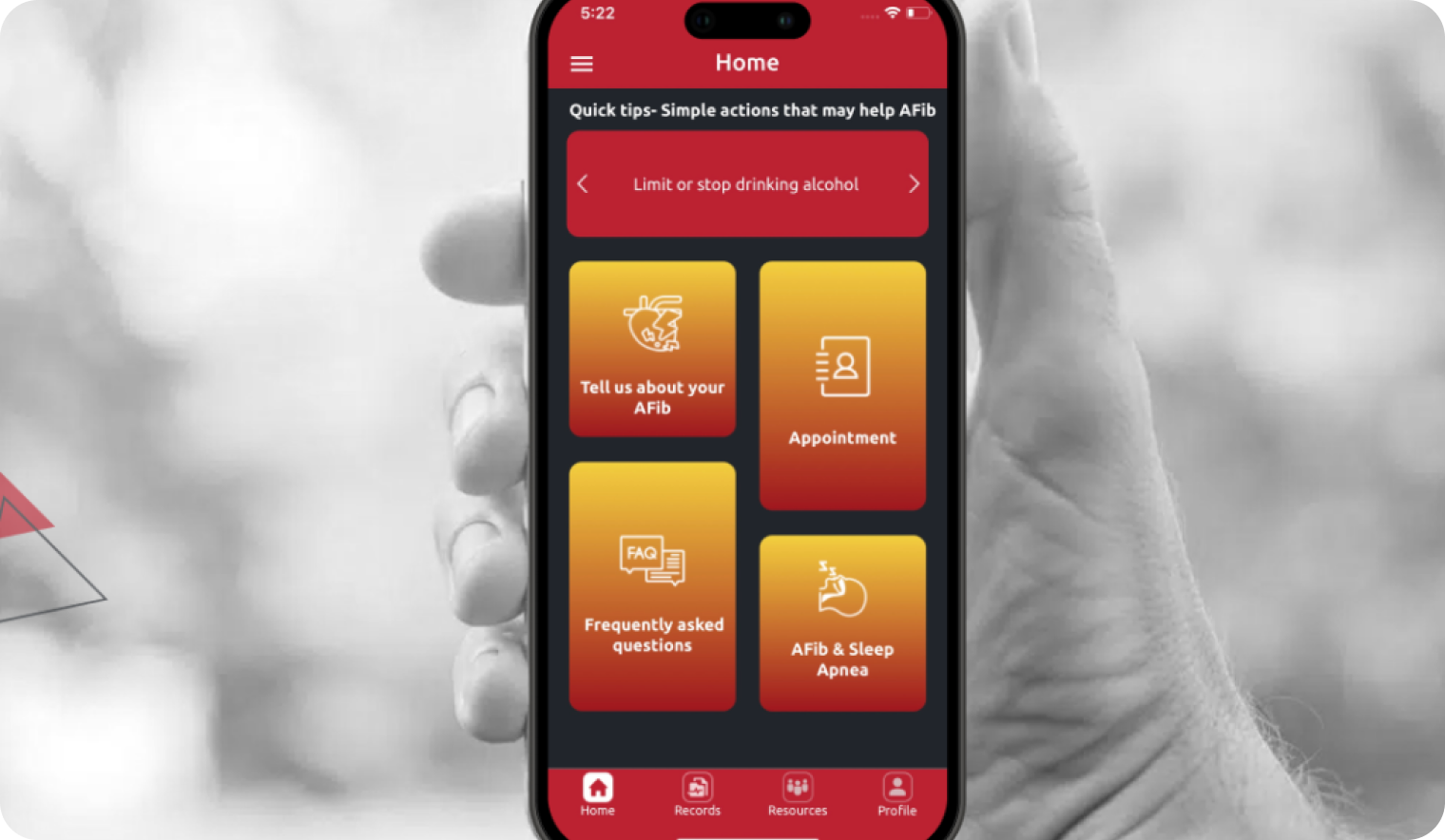Treatment of atrial fibrillation is multifactorial and can be broken down into 3 treatment goals: treat underlying conditions that cause AFib, prevent atrial fibrillation-related blood clots which can cause stroke, and treat the atrial fibrillation itself. Some of the underlying conditions which are risk factors for atrial fibrillation include high blood pressure, heart disease, thyroid disease, diabetes, sleep apnea, obesity and excess alcohol.
These need to be addressed in order to decrease atrial fibrillation frequency and improve the effectiveness of AFib treatment. The most common treatment to prevent blood clots is anticoagulation medication (blood thinners). Treatments that target atrial fibrillation itself are classified as rate control or rhythm control. The goals of rate and rhythm control are to alleviate symptoms, improve quality of life and prevent atrial fibrillation complications.
AFib is characterized by chaotic electrical impulses which originate in the left upper chamber (atrium) of the heart and cause an irregular, often fast, abnormal heart rhythm. Shortness of breath, fatigue, chest pain, palpitations and a racing heart are common symptoms of atrial fibrillation.
Medications like beta-blockers or calcium channel blockers are used to keep atrial fibrillation from making the heartbeat too fast (rate control). There are multiple treatment options available to help keep the heart out of AFib and in a normal rhythm (rhythm control). These include medications (antiarrhythmics), electrical cardioversion, and ablation procedures.
What is cardioversion?
If a person has an arrhythmia, like atrial fibrillation, cardioversion can convert the heart back to a normal rhythm. A cardioversion can be either chemical (using medications) or electrical (electrocardioversion). Electrocardioversion is an AFib procedure that uses electricity to interrupt the abnormal electrical signals and shock the heart to reset it to a normal rhythm.
The most common AFib cardioversion indication is for symptomatic persistent atrial fibrillation. Electrical cardioversion is also used for other abnormal heart rhythms (arrhythmias) like supraventricular tachycardia and atrial flutter.
Electrocardioversion for atrial fibrillation has an immediate success rate of 90%. The heart is less likely to stay in a normal rhythm if it has been in atrial fibrillation for a long time or if there is heart failure or other structural abnormalities. If the heart reverts back to atrial fibrillation after cardioversion, an antiarrhythmic medication may be started and electrical cardioversion attempted again.
After effects of cardioversion
The electrical cardioversion itself is well tolerated and does not have many side effects. The most common side effect reported by patients is chest pain/soreness for a couple of hours after cardioversion. Heart rate is monitored after reversion to a normal rhythm. Some people develop a heart rate that is too slow (bradycardia).
Usually the bradycardia is temporary and the heart rate normalizes quickly. However, on rare occasions the bradycardia is significant and heart rate does not recover. In this case, a pacemaker may be indicated. This is more common in an elderly person with underlying heart conduction system problems.
After a cardioversion for atrial fibrillation, the heart is temporarily stunned. This increases the risk of blood clot formation in the left atrium which can lead to a stroke. Therefore, anticoagulation is an important consideration prior to cardioversion of AFib.
The need for anticoagulation is determined by the duration of atrial fibrillation and a person’s atrial fibrillation associated stroke risk. AFib stroke risk is determined using a risk calculator (CHA2DS2 VASc score – a.k.a. chads vasc). Points are given for age, gender, heart failure, high blood pressure, diabetes, prior history of stroke or blood clot and vascular disease. The higher a person’s CHA2DS2 VASc score, the greater the risk of AFib related stroke.
If a patient can say with certainty that the atrial fibrillation started within the past 48 hours and does not have an elevated CHA2DS2 VASc score, anticoagulation is not needed prior to cardioversion. However, if AFib duration is uncertain or the CHA2DS2 VASc score is elevated it is recommended that a person takes anticoagulation medication for at least 3 weeks prior to cardioversion and for at least 4 weeks after.
If a person with atrial fibrillation is unstable with low blood pressure, confusion, or the heart rate is too fast and is not responding to medication an electrical cardioversion may be needed urgently. In this situation, it is possible that it will be done without regard to prior anticoagulation.
How long does a cardioversion procedure take?
An electro cardioversion is typically done as an outpatient procedure. When a patient presents for cardioversion, a cardiac monitor will be used to confirm the presence of atrial fibrillation. The patient is sedated; heart rhythm, blood pressure and oxygen levels are monitored. Defibrillator pads are placed on the chest and a shock is delivered. If there is cardiac reversion to a normal heart rhythm the procedure is done.
The patient will be monitored while recovering from sedation and then will be discharged home. If the arrhythmia persists after the first shock, up to two more shocks can be delivered. If atrial fibrillation continues after the third shock, other treatment options will be discussed.
Depending on a patient’s particular risk factors a specialized ultrasound of the heart (transesophageal echocardiogram) may be done before the cardioversion. This is done to make sure there is no evidence of blood clots in the heart. If the transesophageal echocardiogram reveals a blood clot the doctor will not proceed with electro cardioversion. This is because a cardioversion in the presence of a blood clot in the heart would significantly increase a person’s risk of stroke.
The cardioversion procedure usually takes a few hours. This includes time for monitoring, sedation, transesophageal echocardiogram (if needed), electro cardioversion, and post-sedation recovery. Because procedural sedation is used, patients need someone to drive them home after electrical cardioversion.
How will I feel after cardioversion?
People with symptomatic atrial fibrillation usually report feeling better after a cardioversion successfully reverts the heart to a normal rhythm. Depending on their AFib symptoms they may experience improved energy, exercise capacity, and resolution of shortness of breath or palpitations. They usually notice a dramatic improvement or even resolution of symptoms almost immediately after cardioversion.
Sometimes people with AFib have very subtle symptoms and electrocardioversion is recommended to see if there is any noticeable change with return of a normal heart rhythm. This can be done to help guide treatment recommendations.
For example, Hector is a 72 year-old man with atrial fibrillation. He and his wife walk their dog daily and this is his primary form of exercise. His wife thinks he is slower on their walks than he used to be but he chalks this up to getting older. He denies fatigue, shortness of breath, chest pain or palpitations. His cardiologist recommends he get an electrocardioversion to see if he notices any difference in how he feels if he is back in a normal rhythm. He undergoes successful cardioversion.
When he returns for a follow up visit 2 weeks later, Hector reports that he is surprised but he has significantly more energy now that he is in a normal rhythm. His wife reports that she is now having to work to keep up with him on their walks. Based on this, his cardiologist recommends they pursue treatment options to help keep him out of atrial fibrillation.
What should you not do after cardioversion?
A person should not drive or operate heavy machinery for 24 hours after electro cardioversion. This allows time for the procedural sedation to be fully cleared from the body. As always, it is very important to take all medications as prescribed. It is normal for the left atrium to be sluggish for the first 48 hours after cardioversion, which increases the risk of blood clot formation during this time. Therefore, if your provider has prescribed an anticoagulant it is critical to take it exactly as prescribed.
Sometimes people ask if cardioversion can cure their atrial fibrillation. Unfortunately, there is currently no cure for AFib. Therefore after cardioversion, the continued management of modifiable atrial fibrillation risk factors like obesity, high blood pressure, sleep apnea, excessive alcohol intake, and diabetes can help prevent recurrence of atrial fibrillation.








